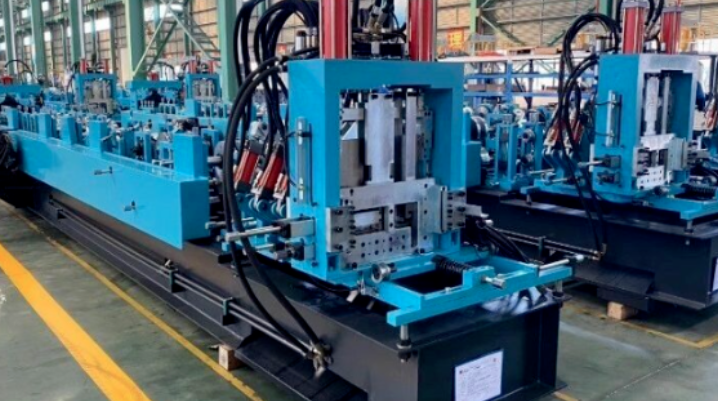
Posted on Saturday, October 5, 2024
Boosting Efficiency in U.S. Metal Building Manufacturing with Roll Forming Technology
In today’s fast-paced construction industry, U.S. metal building manufacturers are constantly seeking ways to improve efficiency, lower costs, and remain competitive. Roll forming technology is emerging as a vital tool for achieving these goals, enabling manufacturers to streamline their production processes while maintaining high-quality output. Here’s how roll forming machines are helping U.S. metal building manufacturers boost efficiency and reduce labor costs.
One of the key advantages of roll forming machines is their ability to produce large quantities of metal components quickly. For metal building manufacturers, this speed is crucial in meeting the high demands of commercial and industrial construction markets. Whether it’s producing structural components like beams, purlins, and roofing panels, or custom profiles for specific projects, roll forming machines can work continuously at high speeds with minimal downtime. This level of efficiency allows manufacturers to take on more projects, complete them faster, and ultimately increase profitability.
The integration of automation in roll forming machines has transformed how metal building manufacturers operate. Automated roll forming lines can perform multiple processes, such as cutting, punching, and bending, in one continuous operation. This reduces the need for manual labor and minimizes the chances of errors, which can lead to costly rework. Additionally, automation allows manufacturers to maintain consistent product quality, ensuring that each component meets exact specifications, regardless of production volume.
Precision is a critical factor in reducing material waste, and roll forming machines excel in this area. By forming metal components with a high degree of accuracy, these machines minimize scrap and optimize the use of raw materials. This not only leads to cost savings but also aligns with the growing emphasis on sustainability in the construction industry. Manufacturers can reduce their environmental impact while simultaneously improving their bottom line.
Today’s construction projects demand more customization than ever before. Roll forming technology offers manufacturers the flexibility to produce custom profiles, allowing them to meet the specific requirements of different building designs. Whether it’s adjusting the thickness of metal panels, creating unique shapes for architectural features, or producing components in various materials such as steel or aluminum, roll forming machines offer a high level of versatility that helps manufacturers stay competitive in an evolving market.
As the U.S. commercial and industrial construction markets continue to grow, manufacturers must find ways to differentiate themselves from the competition. Roll forming machines provide a significant competitive edge by enabling manufacturers to produce high-quality metal building components faster and at lower costs. By investing in advanced roll forming technology, manufacturers can meet tight project deadlines, offer customized solutions, and maintain a strong market position.
In the U.S. metal building industry, efficiency is key to success. Roll forming technology allows manufacturers to boost production speed, reduce labor costs, and maintain consistent quality, all while staying flexible to meet the demands of modern construction projects. By adopting advanced roll forming machines, U.S. manufacturers are well-positioned to stay competitive in an increasingly dynamic market, ensuring long-term growth and success in the commercial and industrial construction sectors.

32/1000 Box Profile Roll Forming Machine – Complete Guide & Specifications
Posted on Sunday, November 16, 2025
High-performance 32/1000 box profile roll forming machine for roofing and cladding. Full specifications, profiles, applications, pricing

PBR / R-Panel Roll Forming Machine – Complete Guide & Specifications
Posted on Sunday, November 16, 2025
PBR / R-Panel roll forming machine for roofing and wall cladding. Full specs, profiles, applications, pricing, and global buying guide. Built to order.

Posted on Sunday, November 16, 2025
How to Diagnose and Fix the Hidden Electrical Problems That Cause Downtime
Copyright 2025 © Machine Matcher.